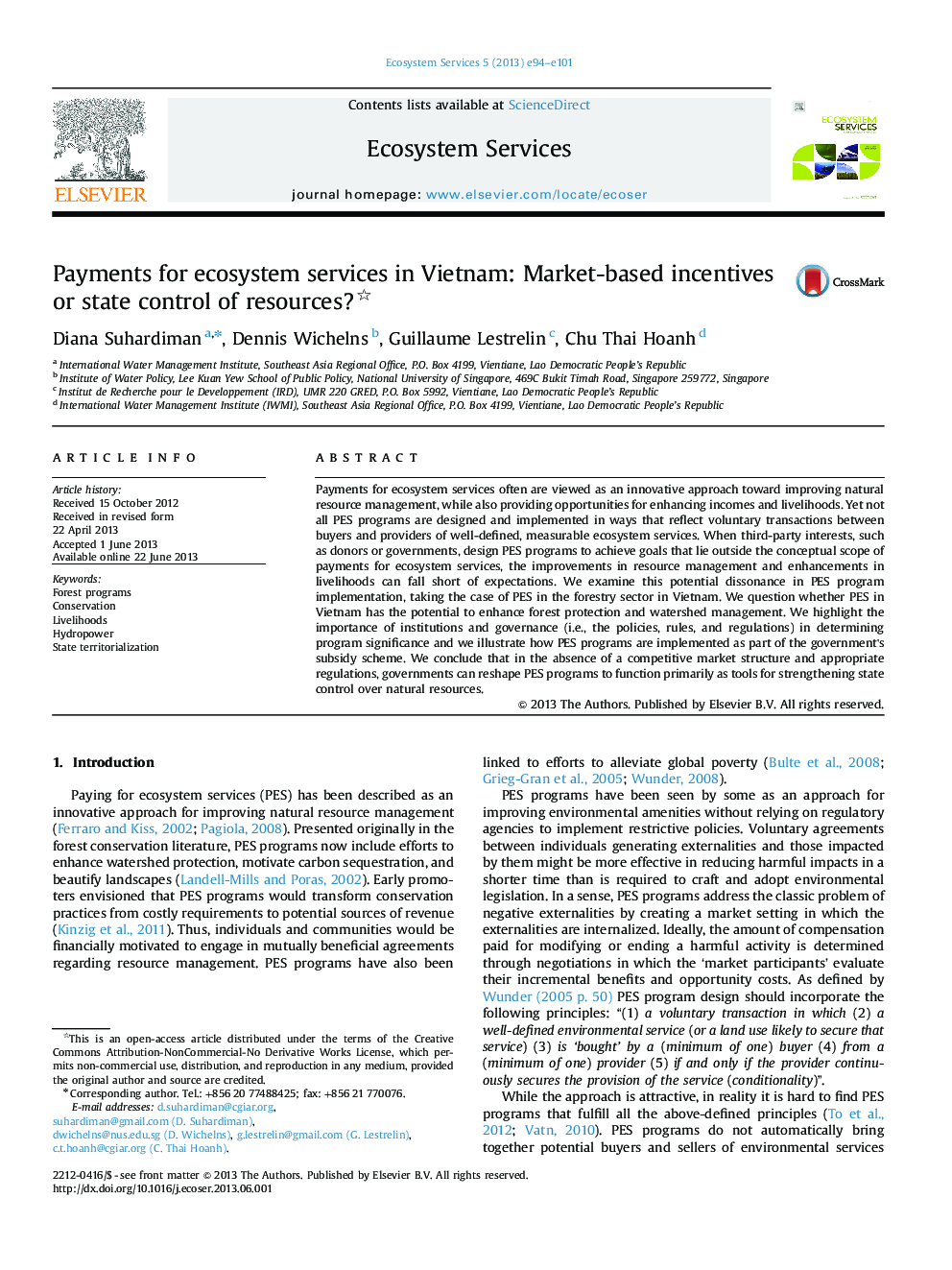| Article ID | Journal | Published Year | Pages | File Type |
|---|---|---|---|---|
| 6556996 | Ecosystem Services | 2013 | 8 Pages |
Abstract
Payments for ecosystem services often are viewed as an innovative approach toward improving natural resource management, while also providing opportunities for enhancing incomes and livelihoods. Yet not all PES programs are designed and implemented in ways that reflect voluntary transactions between buyers and providers of well-defined, measurable ecosystem services. When third-party interests, such as donors or governments, design PES programs to achieve goals that lie outside the conceptual scope of payments for ecosystem services, the improvements in resource management and enhancements in livelihoods can fall short of expectations. We examine this potential dissonance in PES program implementation, taking the case of PES in the forestry sector in Vietnam. We question whether PES in Vietnam has the potential to enhance forest protection and watershed management. We highlight the importance of institutions and governance (i.e., the policies, rules, and regulations) in determining program significance and we illustrate how PES programs are implemented as part of the government's subsidy scheme. We conclude that in the absence of a competitive market structure and appropriate regulations, governments can reshape PES programs to function primarily as tools for strengthening state control over natural resources.
Keywords
Related Topics
Life Sciences
Agricultural and Biological Sciences
Agricultural and Biological Sciences (General)
Authors
Diana Suhardiman, Dennis Wichelns, Guillaume Lestrelin, Chu Thai Hoanh,
